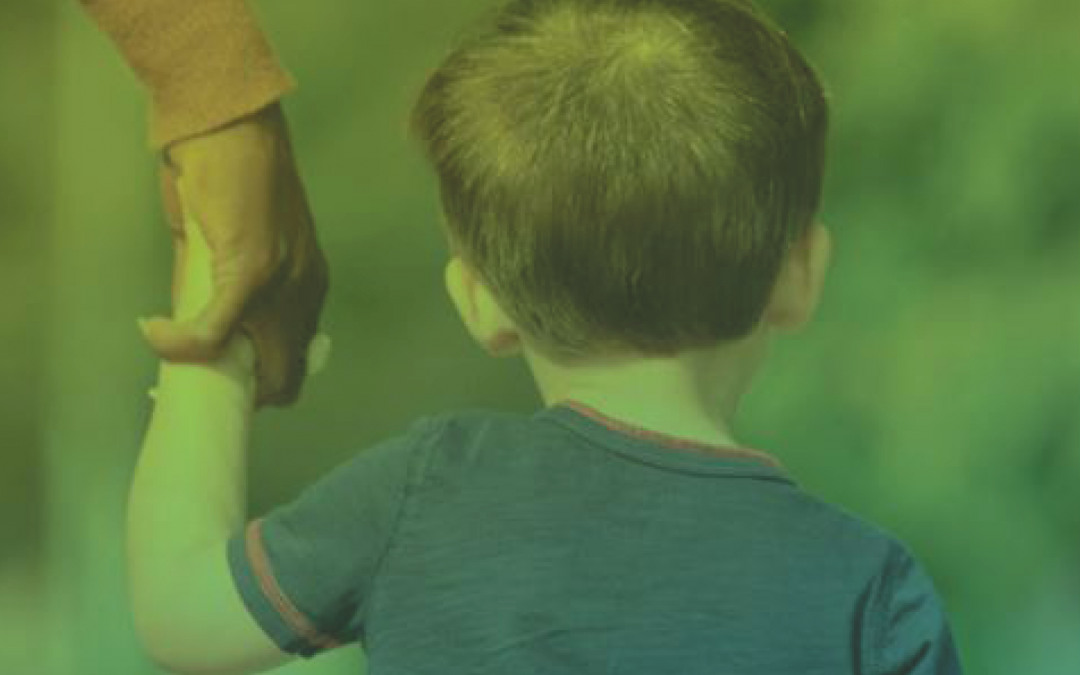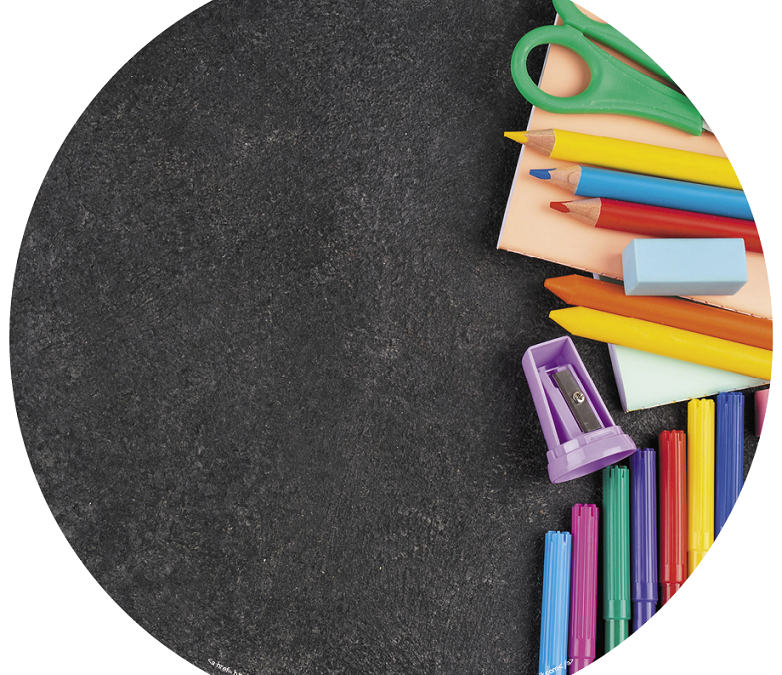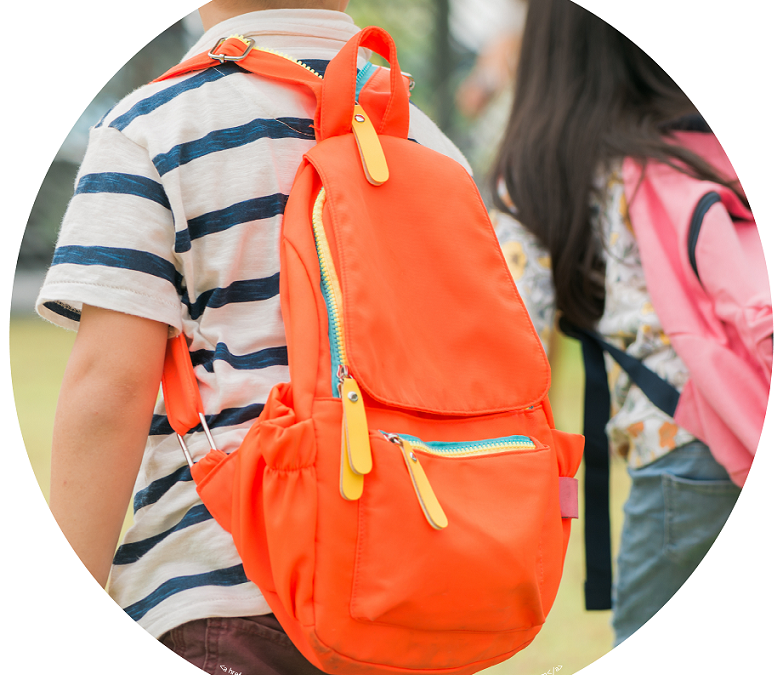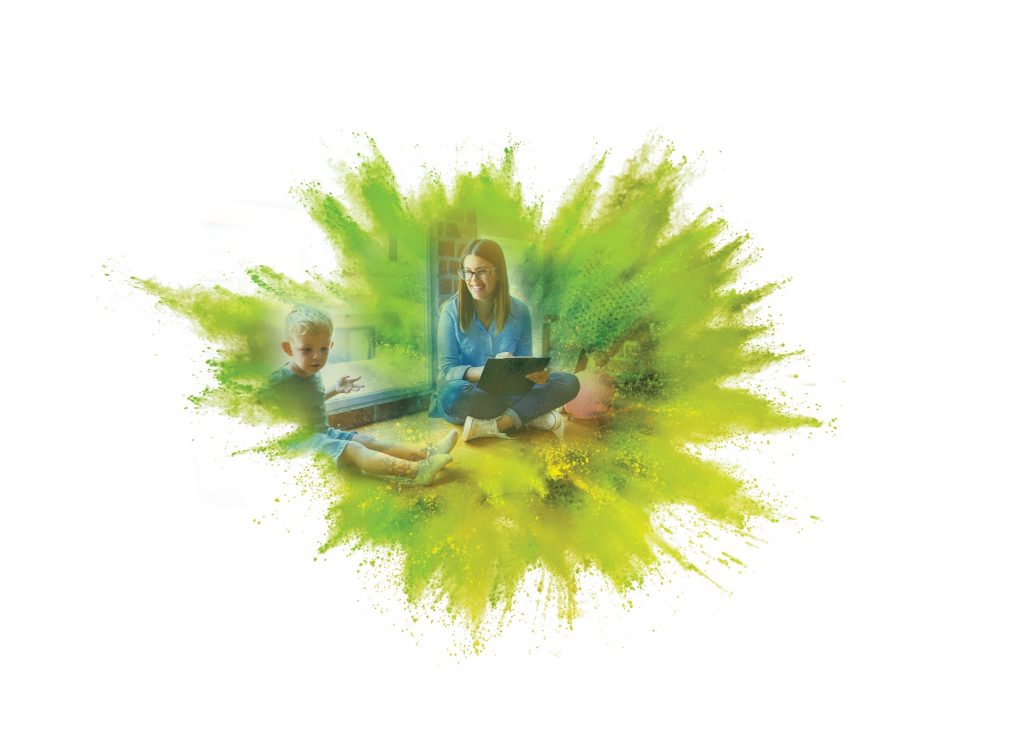
by IABA Team | Oct 19, 2021
One of the challenges of modern life is the lure of having it all. We believe that if we can just manage our time, our child with autism can have the best experiences at school, at ABA therapy, with friends, and at home with family. When we’re spread too thin, though, we don’t benefit fully from anything. But when we learn to prioritize according to our values, we may not feel regret about making difficult choices and doing less.
Letting our values guide our choices is an unfamiliar concept for most of us — and it requires a little self-exploration to determine our priorities. But the rewards can be huge.
How COVID-19 Affected Priorities
Despite COVID’s continued impact, families are beginning to have more options for kids with autism. In-person school might be slotted in next to ABA therapy, and the combination can radically alter evening routines as everyone in the family also needs to take time to prepare to do it all again the following day. Here, families may struggle to decide which treatments to pursue for their child.
A family may see major benefits with ABA therapy but also recognize that COVID-related disruptions were very hard. Many parents think their child will benefit from going back to school, yet they don’t want to lose ABA therapy and they also want to have family time.
In a situation like this would a family benefit from having some of everything? Or would fewer activities that allow for richer experiences be better? In a lot of cases, efforts are not necessarily concentrated enough to have positive outcomes in any of the choices.
A tough decision is easier when a family can figure out what they really value. Evaluating what parts of in-school therapy, clinical therapy, and at-home therapy can help families decide what is most important for their child.
Developing Priorities for Children with ASD
As with everything else in life, values are not necessarily constant. This means we can adjust behaviors and choices to align with shifting values.
Determining our values can help steer us toward more fulfilling outcomes, even on a day-to-day basis. If your child is working toward learning to tie their shoes independently, for instance, repetition will help them achieve this more quickly. The downside to a lot of repetition is that you aren’t able to get other values-related tasks done. Putting the things you value most at the front of your list can help tackle important issues first.
The beauty of a values-based approach to lifestyle choices is that each parent’s values are personal and specific to them. There’s no comparison or measurement of personal values, so no guilt should be involved.
For example; if a parent can better approach each day when there’s no lingering laundry to fold, they’re not prioritizing laundry over children. But they are placing value on having an uncluttered mind so they can be more present in the moments that really matter.
ABA Therapy from IABA Consultants
If you have questions regarding autism treatment, education, or plans using ABA therapy, we are here for you! Our goal is to make sure no family is turned away due to financial constraints. Our therapy team would love to talk to you. Find the location closest to you and give us a call. We’re here for you.
Originally Posted as Values Can Help Clarify Choices With a Child With Autism, Chicago Parent, September 17, 2021

by IABA Team | Sep 6, 2021
We recently wrote a blog on what to do to start a smooth back-to-school transition for kids with ASD. The blog was fairly dense, so this one is going to take a more compact look in a checklist form for back-to-school needs.
ASD School Supply Checklist
Each school, daycare, or therapy clinic will have different requirements for school supplies. Before looking at our general list, you’ll definitely want to look over any list of supplies or materials provided by your child’s school.
The following are general items with brief guidelines to help you remember what your child may need at school.
- Lunch box. Having a reusable lunch box with compartments may help your child get into a regular lunch routine. Buying several of the same lunch boxes can help if you don’t have time to wash one every day. Compartments in lunchboxes can help your child understand where their regular lunch foods will be every day.
- Comfortable Clothing. Make sure your child is comfortable with all of the clothing they will be wearing to school. This is especially important for children with sensory issues as new clothing may not be comfortable. Be sure to have your child wear any new clothes at home before sending them to school in a new outfit. Buying the same outfits may also help some children get into a routine for school every day.
- Comfort Items. Make sure your child has their favorite comfort item to bring to school each day. Things like stuffed animals or a favorite blanket may help your child settle into a comfortable routine at school each day.
- Consistent School Supplies. After looking at a supply list provided by your child’s school, go shopping with your child and allow them to pick versions of the supplies they are comfortable with. Remember to buy extras of expendable supplies so they will have the same item they are comfortable with after the first one is done.
- Organized Backpack. A backpack with extra pouches or internal dividers is a great way to set up your child’s bag for easy use that can help them get into a regular school routine. Putting things in the same place can help them remember where their things are throughout the school day.
- Sensory Items. If your child has specific sensory issues, be sure to have a specific sensory comfort item packed in their backpack. Textured items like smooth stones or blankets made from specific materials can help if your child needs comfort during the school day.
- Books. Packing specific books can also help your child deal with difficult times during school. Books are a combination of comfort items and sensory items, as a teacher or aide can read the book to them if needed.
- Emergency Sheet. Be sure to include any information a teacher, aide, or therapist may need in your child’s bag. This sheet should include any and all information regarding sensory issues, specific behavioral issues, preferences, and anything else they may need to know if your child is having a difficult time.
- A Phone for Emergencies. This is not a phone for your child, but a phone for the teacher to use if your child really needs a parent. Definitely talk to your child’s school about policies and procedures for phones–don’t just pack one in their backpack. A basic flip phone is all that is required for emergencies where a parent is needed right away.
Remember, not all of these things will be required for your child. This list is for supplies you may have forgotten as the school year got here. Think of it as a list to jog your memory or help you modify school supplies to fit the needs of your child.
ABA Therapy from IABA Consultants
If you have questions regarding autism treatment, education, or plans using ABA therapy, we are here for you! Our goal is to make sure no family is turned away due to financial constraints. Our therapy team would love to talk to you. Find the location closest to you and give us a call. We’re here for you.
References
50 Back-to-School Tips from Autism Moms, Angelsense
Back To School Tips For Families With Autistic Children, Art of Autism

by IABA Team | Aug 17, 2021
Going back to school is tough for most kids, but especially so for kids with ASD. The change of scenery & routine from summer break to a school setting can be tough. The COVID-19 pandemic has made things especially difficult, which affects kids who were used to digital or in-home learning during the last school year.
So, how can we make it easier for kids with ASD to transition back to an in-school environment? There are many things that can be done, so let’s take a look.
Develop a Plan with Your Child’s Therapist or Doctor
Developing a plan with your child’s therapist, doctor, or other healthcare providers can help children with ASD smoothly transition into a new school year. Putting a plan in motion with rules & methods that will be consistent in school, therapy, and at-home settings can make a world of difference.
Make sure to have a clear schedule complete with calendar dates so your child is aware of the coming changes. Talking with your child’s therapist or other healthcare providers can help you select the best way to count down to important milestone days on your calendar.
Make a List of Your Child’s Skills & Needs
Having a prepared list of your child’s skills and needs will make any discussions with teachers or administrators easier. Being able to quickly ask and answer questions will allow you to get a full picture of what your child will need to expect.
Be sure to list strengths, weaknesses, sensory issues, and any other important parts of your child’s ASD-specific behavior. Having a list of these issues will help you quickly and efficiently communicate the needs of your child. Talking to your child’s therapist or doctor can help you build a list that will be sure to mention any special needs.
Talk to a School or School District Administrator
Finding out how your child’s school or school district helps children with ASD is a huge priority for your back-to-school plans. Learning about the specific resources available for your child at school will help you make decisions about the school year.
Depending on the level of care your child needs, some school districts offer great special education programs geared towards kids with ASD. Sometimes different options are available for students with ASD, allowing parents to select the best option for their child.
This is just general information–every school district is different. To find out pertinent information for your situation, please contact the local school district. It may be wise to check out several surrounding school districts if you don’t like the programs from the district you live in.
Visit Back-to-School Settings Before School Starts
Taking your child to the school they will be attending early a few times may help them get used to the new setting. Walking through the hallways & classrooms, looking at the gyms & washrooms, and checking out the playground may help familiarize your child with the school. Try to get your child as comfortable as possible with the new school before the year starts.
An even better way to familiarize your child with their new setting is getting to meet their teachers several times before the school year. Getting to know the teacher or therapists at the school can help your child get comfortable with their new setting.
Re-Establish a School Schedule
It is very important to get your child back on a regular daily schedule before school starts. Establishing consistent bedtime and morning routines will help your child be ready for school. Starting this schedule a few weeks prior to school can help get your child on track for the school year.
Other scheduling issues may also be important. Here are a few examples of other scheduling things to keep in mind:
- Transportation times
- Eating times
- Nap times
- After school routines
- Weekend scheduling
- Any regular trips to therapy or the doctor
It is important to talk to your therapist or healthcare provider about weekend scheduling. Getting information about keeping the daily schedule on weekends or being a bit more flexible are questions you should find answers to.
Be sure to coordinate your schedule with the school (teacher, therapist, administrator, etc) to make sure your child stays on track.
Lastly, be sure to inform your child about any upcoming breaks, starting a few weeks before the break. Using a calendar or other time management system can help transition your child from regular school to break time more smoothly. Using social stories and visual aids on a calendar can help your child understand what’s on the horizon.
Establish an In-School Schedule
Working with your child’s teacher or therapist to implement a regular in-school schedule can help your child settle into a comfortable school year. Having daily school activities occur at the same time every day lets your child know what to expect each day. Working with your school or school district before the year starts to get a plan in place can help implement this strategy.
If your child has specific needs that revolve around a schedule, be sure to talk to the school, teacher, or therapist about how to tackle the issue. Having plans in place before something happens may help prevent difficult situations from arising.
Discuss Education Plans with Your Child’s Teacher
Most people won’t agree 100% on any school curriculum. This is especially true when it comes to education for children with ASD. You need to talk to your school or school district to see what kind of specialized education and methods will be used in your child’s classroom.
Don’t panic if you have minor disagreements with the teaching plan–sometimes it may be beneficial. We need to be clear though; if you think something sounds really wrong, be sure to call your child’s therapist or doctor and discuss the issue. It may be miscommunication but it may also be something that you should avoid. Talking to an expert on the issue can help you sort things out.
If your child has specific sensory issues, be sure that the teacher has a safe space to use in difficult situations. Having a place where your child can reacclimate at their own pace will help avoid specific situations. If your child has special needs for a safe space area be sure to discuss this with the teacher before the school year begins.
Try to Get Your Child Used to Social Situations
This information may not apply to every child; be sure to talk to your child’s therapist or doctor before planning anything.
Schools contain a lot of people in one building. Getting your child used to more people being around by taking trips to more populated areas or running errands to larger stores may help prepare your child for the transition to school. Situations with other people involved may help your child get used to many different people being around in their school.
Talk About COVID-19
The COVID-19 pandemic is still ongoing, and many schools have different rules when it comes to things like masks. If your child has sensory issues with wearing a mask or using sanitizer you need to talk to your child’s school and your therapist or doctor to develop a plan.
Learning about your school district’s health policies can give you the information you need to discuss masks, sanitizing, and other COVID-19-related issues. Special accommodations may be able to be put in place for your child’s needs.
Be sure to acclimate your child to any COVID-19 procedures that will be used at school prior to the school year starting.
Keep Communicating with Your Child’s School
It is extremely important to keep regular communications with your child’s teacher and anyone else regularly involved with your child. Hearing about your child’s progress, issues, and general behavior will allow you to evaluate any immediate needs as soon as they pop up.
Talking with your child’s therapist or other healthcare professional can help you put together a list of questions to ask for status reports. Having a consistent report can show how your child is progressing and behaving on a regular schedule.
Stay Interested & Involved
We want to finish up with the most important piece of information regarding transitioning a child with ASD back to school; Stay interested and involved. None of the things above will stick if your child isn’t receiving attention and care at home. Following a schedule and engaging in activities that are in place in therapy, at school, and, most importantly, at home can help your child maintain consistent behavior.
Showing interest in your child’s school activities and progress can help them progress even more than just setting a plan. Using visual aids, like a calendar with milestone stickers, may help your child understand the progress they are making in school.
Again, talk to your child’s therapist, doctor, or other healthcare professionals to find the best way to stay engaged with your child’s education. Every child is different. Be sure your child is getting the best care they can by staying involved.
ABA Therapy from IABA Consultants
If you have questions regarding autism treatment, education, or plans using ABA therapy, we are here for you! Our goal is to make sure no family is turned away due to financial constraints. Our therapy team would love to talk to you. Find the location closest to you and give us a call. We’re here for you.
Sources
Helping Kids with Autism Transition Back to In-Person School, UC Davis
Back to School: 17 Tips to Help, Autism Speaks
Preparing for Back to School, Autism Speaks
Students with Autism, publicservicedegrees.org
COVID Autism Back to School Transition, Stonybrook Medicine




